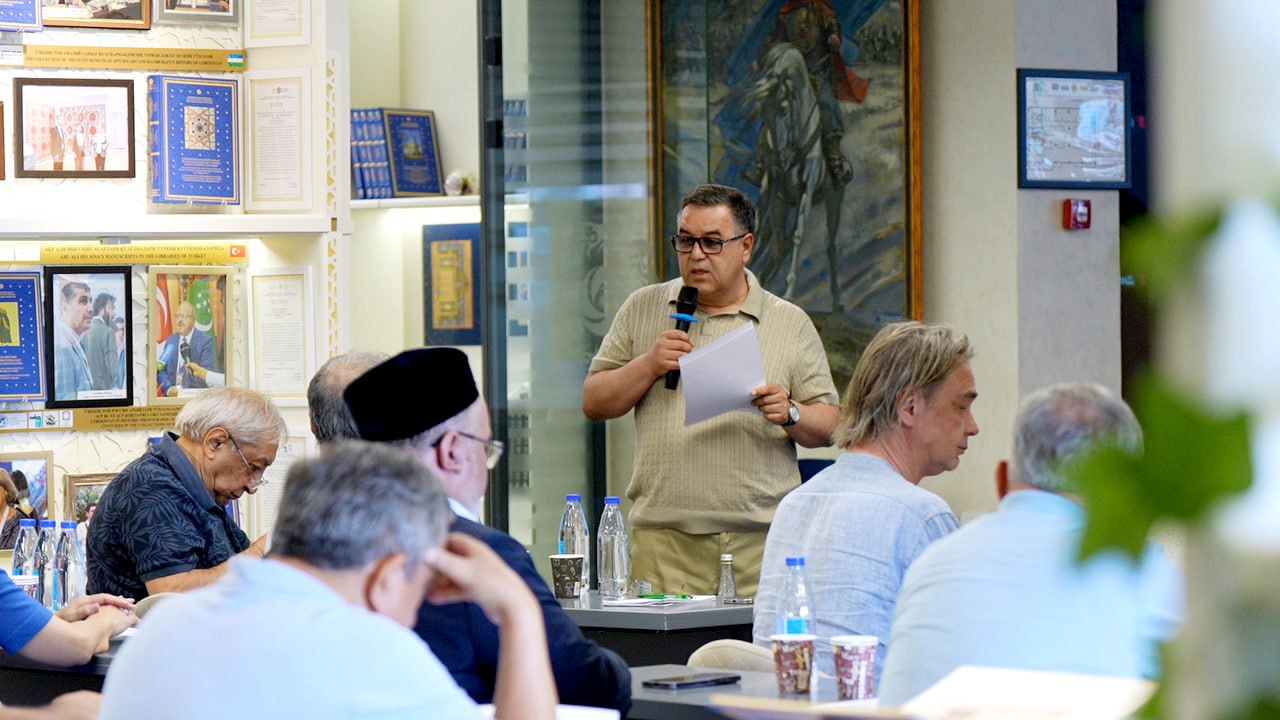Head of UzCIC: “We must convey to the world scientific community that we are returning this historical heritage”

Another meeting of the Extended Scientific Council was held at the Center of Islamic Civilization in Uzbekistan. The meeting was conducted in both in-person and online formats. At the beginning of the meeting, Dr. Miljana Radivojević, a research associate in the Archaeological Department of King's College London, presented the results of archaeological research conducted in the Namangan region at the Akhsikent archaeological site.

Miljana Radivojević has been actively involved in archaeological research conducted in our country for many years.
"Akhsikent is one of the oldest centers of metallurgy in the world. Together with our Uzbek, Cypriot, and British colleagues, we have proven that metallurgy in Akhsikent was highly developed during the early medieval period. Specifically, we confirmed that the famous Damascus blades produced in the Islamic world used steel that was mined and processed in Akhsikent. We hope to present this historical fact as a separate media project at the opening ceremony of the Center," she said.
Ekaterina Soboleva, an expert in the International Relations Department of the Center, briefed the members of the Council on the concept of the grand opening ceremony of the Center of Islamic Civilization in Uzbekistan. During the presentation, the events included in the program were discussed, as well as the agenda for the IX Congress on the theme "The Heritage of the Past — The Foundation of a Great Future," the list of participants, the new Imam Bukhari building, and the innovative museum.

The Director of the Center of Islamic Civilization in Uzbekistan, Firdavs Abdukhalikov, spoke about the international exhibition dedicated to the opening of the Center and the manuscripts and exhibits that will be brought from abroad. He noted that large-scale efforts are underway to organize the participation of directors from several museums, libraries, and private collections from foreign countries in the exhibition.
"We have selected 46 lots related to Uzbekistan's cultural heritage from the 'Sotheby's' and 'Christie's' auctions in the United Kingdom, which took place from April 25 to May 2," said the head of the Center. "Negotiations are currently ongoing regarding their purchase and delivery to Uzbekistan. We need to convey to the global scientific community that we are reclaiming this historical heritage. Therefore, we plan to hold international events on this issue in the United Kingdom and France."

Members of the Council presented a list of foreign guests who will attend these important international events. The list of Uzbek scholars and experts who will participate in these international events was also approved.
During the meeting, a research associate of the Center of Islamic Civilization, Alisher Egamov, reported on the historical exhibits that will be presented at the Center's exhibition from the museum collections of various regions of Uzbekistan. As a result of expeditions organized in March-April, more than 1,500 historical artifacts were found. The most significant items were selected to be displayed at the international exhibition dedicated to the opening of the Center.
Additionally, the issue of creating a database of scientific and practical materials for second-level media projects, which will be included in the Center's exhibition, was raised. The members of the Council also made their suggestions on other matters. During the meeting, a joint project between the Center and the World Society for the Preservation, Study, and Promotion of Uzbekistan’s Cultural Heritage was discussed — the publication of volumes 81-90 of the book-album series "Cultural Heritage of Uzbekistan in World Collections." Information was also provided about the seven book-albums that are being prepared for publication.
Furthermore, new design solutions for the Quran Hall were approved during the meeting.
"Since the Quran Hall is located in the central part of the building, special attention is given to its design," said Azimjon Gaffurov, the head of the Center of Islamic Civilization in Uzbekistan. "We presented the Council with two options for a lighting installation for the place where the Hazrati Usman Quran will be placed. The most suitable option was chosen during the meeting."

During his next visit to the Center of Islamic Civilization, the President of Uzbekistan, Shavkat Mirziyoyev, issued instructions to enhance cooperation with international partners, including leading museums, libraries, and research institutions worldwide. One of the key points of the decision was the allocation of spaces on the second floor of the Center’s building for the offices of international organizations, as well as the construction of a separate new building for the Center of Islamic Civilization. Currently, the Center has about forty primary partner countries. All necessary conditions for their work will be created on the second floor of the Center, and the organization of this space at a modern level was particularly emphasized during the next extended meeting of the Scientific Council of the Center of Islamic Civilization in Uzbekistan.
Most read

Over 100 experts from more than 20 countries of the world are in Tashkent!

President of Serbia Aleksandar Vučić visited the Islamic Civilization Center in Uzbekistan

The Center for Islamic Civilization – a global platform leading towards enlightenment











